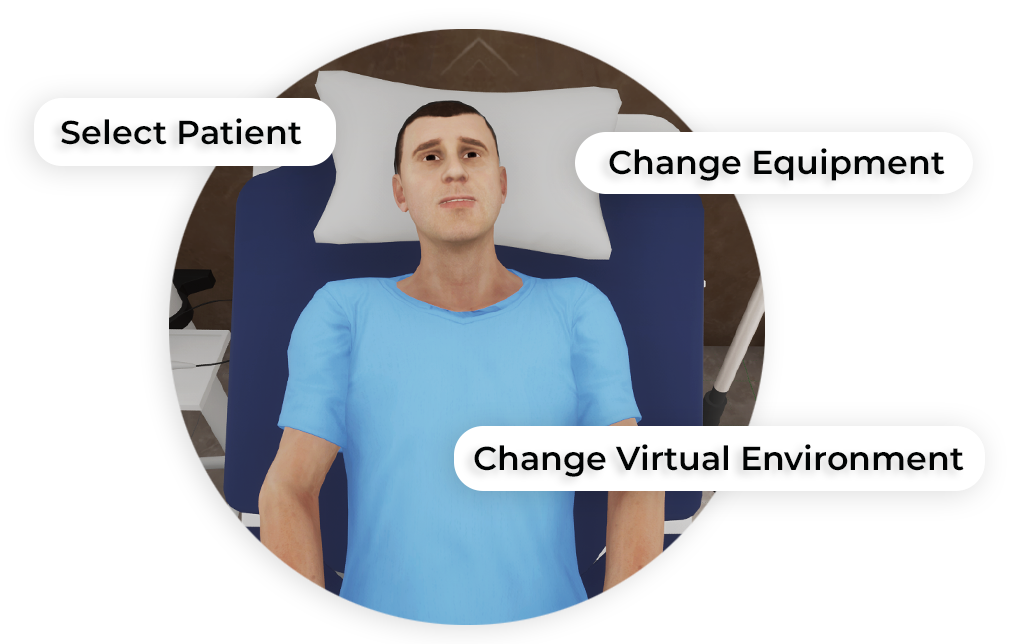Fiberoptic Intubation
Fiberoptic intubation is a procedure employed towards establishing airway access in both anticipated and unanticipated difficult airways. This technique consists of a flexible endoscope that is passed through the glottis with a tracheal tube loaded along its length.
This VR simulation for Fiberoptic Intubation is designed to help healthcare practitioners practice the procedure of performing an awake fiberoptic intubation in a realistic environment with a virtual patient. With both training and assessment modes, learners can perform the procedure and assess themselves on their performance.
- Identify patient’s most patent nasal passage
- Accurately identify laryngeal structures and advance the scope towards glottis opening
- Advance the scope until the tip is proximal to carina
- Confirm endotracheal tube is in trachea before removing scope
- Connect breathing system and verify correct placement

- Kramer A, Müller D, Pförtner R, Mohr C, Groeben H. Fibreoptic vs videolaryngoscopic (C-MAC(®) D-BLADE) nasal awake intubation under local anaesthesia. Anaesthesia. 2015 Apr;70(4):400-6. doi: 10.1111/anae.13016. PubMed PMID: 25764403.
- Simmons ST, Schleich AR. Airway regional anesthesia for awake fiberoptic intubation. Reg Anesth Pain Med. 2002 Mar-Apr;27(2):180-92. Review. PubMed PMID: 11915066.
Customize Your Program
Get rid of the editor. Adopt in-VR customization.
MedVR Education is bringing to you in-VR customization that will enable you to put together your own simulations by making selections from a wide range of feature choices.
- Select patient from a diverse background
- Choose preferred virtual environment
- Select equipment used in the procedure
- Modify difficulty level of the assessment mode
- …..many more to come

 Multi-player
Multi-player
Sessions Physics-based Interaction
Physics-based Interaction
Core Skills Training

Performing Fiberoptic Intubation
As a part of this Fiberoptic Intubation procedure, the learner will begin by spraying a topical vasoconstrictor into the nostril followed by topically anesthetizing the nose and oropharynx. The learner will inspect the nares, lubricate the tubes and gently advance it into the nose followed by advancing the scope through the tube until the distal end emerges from the tube. The learner will advance the camera until the carina is visualized. If required, additional medication may be administered at this time. The scope will be withdrawn when the tube position is confirmed to be within the trachea and above the carina. All necessary affordances are provided to complete the procedure with efficiency.
Training
With prompts, guidance and affordances learners are hand-held through the process to practice the procedure in a virtual environment with a virtual patient.
- Photorealistic virtual environment
- Physics-based interactions
- Detailed instructions
- Adequate affordances to assist in task completion

Assessment
Test acquired skills to perform the procedures from start to finish without prompts. An incorrect step will take the learner back to the start to start afresh.
- Live scoring
- Instant feedback
- Adequate affordances for efficient performance
- Time tracking to monitor activity completion







